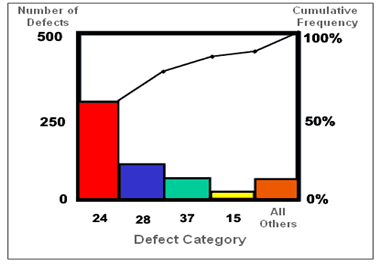Creating a SIPOC Chart
April 3, 2025
 Creating a SIPOC Chart
Creating a SIPOC Chart
The SIPOC Chart, being one of the fundamental documents of any process improvement project must be developed in such a manner that it is easy to understand. It must also be coherent with the logic inbuilt in the process. There is a method which has been described to ensure the proper development of the SIPOC…
 Challenges Faced in Conducting Voice of Customer Exercise
Challenges Faced in Conducting Voice of Customer Exercise
The Voice of Customer may sound like a simple exercise. However it would be safe to say that reading at the literature makes it look deceptively simple. Anyone who has an experience with market research will understand the issues involved. For a Six Sigma project to be successful, the Voice Of Customer must be accurate.…
 Check Sheet – A Basic Six Sigma Tool
Check Sheet – A Basic Six Sigma Tool
A check sheet is a simple tool that was once a part of the seven basic tools of six sigma. It is said that check sheet has become obsolete because of the introduction of software which have the capability to record high volumes of data and present them in a format as required. The check…
The Pareto Principle was an observation of a famous Italian economist named Vilfredo Pareto. He was trying to analyze the distribution of income amongst the population of Italy. That is when he observed that 80% of the income generated went to 20% of the population. He then began observing this 80/20 principle across nature. He observed that it seemed to be universally correct. This principle was named as the Pareto Principle in his honor.
The implications of the Pareto Principle are profound. The Pareto Principle states that doing 20% of the things right will give you 80% of the results you desire. It is a process of segregating the vital few from the trivial many and working on the vital few to get the best results. The words “vital few” and “trivial many” were at the center of the Pareto philosophy.
Pareto analysis is a six sigma quality tool. It uses the Pareto Principle to find out solutions to business problems. As every manager would know, once you are put in charge of a certain department or work area, there are multiple problems that show up. In fact sometimes these problems are so many in numbers that it can be overwhelming for a manager to make any sense of the data that he/she may have at hand.
Thus managers use Pareto Principle and segregate the:
So on and so forth....

Figure: Pareto Analysis Lays More Emphasis On Cumulative Frequency To Segregate The Most Important Factors
Since the problem that every manager has to solve are unlimited. However the resources that he has in his hands are very much limited, resources need to be put to the best use. For this reason it is important that the resources be used to solve problems that will give the most benefit or reduce the maximum number of hassles.
Thus too ensure that the processes of an organization are defect free, one must first conduct a Pareto analysis, find out the most important causes, the chief factors that cause variation and correct them.
Pareto analysis is strongly recommended by management scientists who rely on data for decision making. They believe that the data is overwhelmingly in support of the validity of the Pareto principle.
Your email address will not be published. Required fields are marked *